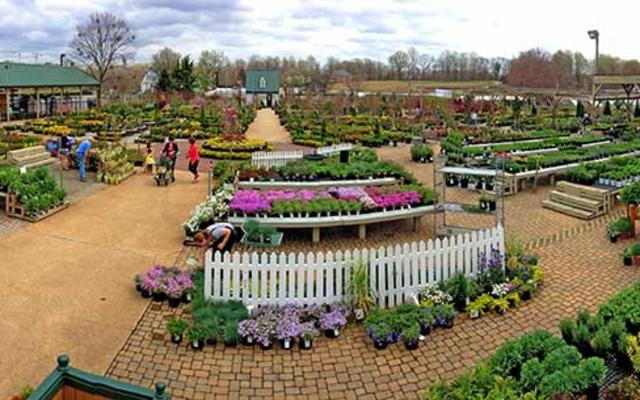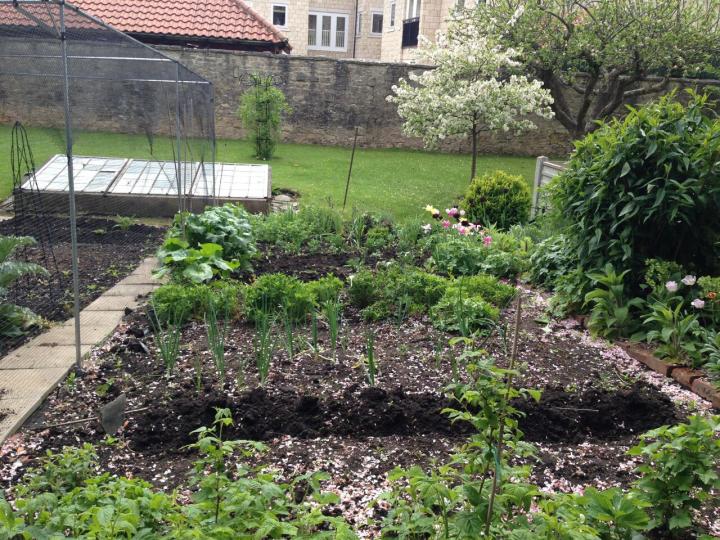Learn How to Grow a Thriving Gardening Atmosphere for All Ability Degrees
Creating a growing yard is a complex endeavor that can be accepted by people at any ability degree. By examining essential parts such as dirt health, suitable plant choice, and seasonal treatment regimens, one can create a lasting horticulture practice that yields rewarding results. Comprehending just how to analyze and enhance your garden area lays the structure for success. The details of implementing these principles frequently present difficulties that can prevent even the most enthusiastic novice. What strategies can be used to get over these challenges and promote a really successful atmosphere?
Recognizing Your Yard Area
In the world of gardening, understanding your yard area is vital to growing a thriving landscape (Homestead Gardening). The initial step in this venture includes assessing the particular qualities of your plot. Variables such as soil make-up, sunshine exposure, and drainage play crucial duties in determining the suitability of your garden for numerous sorts of plants
Begin by carrying out a dirt examination to evaluate pH degrees and nutrient material, which will certainly inform any type of essential amendments. Furthermore, observe how much sunlight your area obtains throughout the day. Different plants have varying light demands; some grow completely sun, while others favor complete or partial color.

Last but not least, evaluate the readily available room and strategy as necessary. This includes thinking about plant heights and spread to ensure sufficient room for growth without overcrowding. By gaining a comprehensive understanding of your yard room, you established the foundation for a successful horticulture experience.
Choosing the Right Plants
Choosing the right plants for your yard calls for cautious factor to consider of different elements, including climate, dirt problems, and personal preferences. Beginning by assessing your regional climate, as details plants thrive particularly temperature varieties and climate patterns. Exotic plants might not endure in colder areas, while sturdy perennials can withstand rough wintertimes.

Consider your personal preferences, including visual allure and upkeep degrees. Determine whether you favor vibrant flowers, lush foliage, or edible crops. Additionally, consider the moment and initiative you are willing to spend in plant treatment, as some varieties require even more interest than others.
Finally, think about the yard's format and light direct exposure. Sunlight patterns throughout the day will affect your selections-- some plants call for complete sun, while others flourish in shade. By attentively analyzing these aspects, you can produce a harmonious and productive garden tailored to your environment and preferences.
Necessary Gardening Tools
A well-equipped gardener can significantly improve their horticulture experience and outcomes. Necessary gardening tools are fundamental to growing an effective garden, despite skill degree. First, a durable spade is important for excavating and transforming dirt, while a trowel permits for specific growing and transplanting of smaller sized plants.
Pruning shears are essential for keeping plant health and wellness by getting rid of dead or disordered branches, advertising better air blood circulation and growth. Furthermore, a hand rake is valuable for clearing debris and aerating the soil, making sure ideal problems for plant origins.
Gardening gloves protect hands from blisters, thorns, and chemicals, making them an essential accessory. A watering can or tube with an adjustable nozzle makes certain that plants receive sufficient wetness without overwatering.
Last but not least, take into consideration buying a strong wheelbarrow for transferring dirt, plants, and tools around the garden successfully. By assembling a top quality toolkit get redirected here that includes these essential things, garden enthusiasts can tackle different jobs with self-confidence and simplicity, leading the way for a thriving gardening setting. Bear in mind, the right tools not only enhance performance but also boost the general satisfaction of the horticulture process.
Soil Preparation and Upkeep
Quality soil is the foundation of an effective yard, making correct prep work and upkeep essential for healthy and balanced plant growth. The initial step in soil prep work involves examining its pH and nutrient levels. This can be attained through dirt testing sets readily available at horticulture facilities or with professional solutions. Based on the examination results, amendments can be made to maximize soil problems for certain plant demands.
Incorporating organic issue, such as compost or well-rotted manure, is necessary for enhancing soil framework and fertility. This not only boosts vitamins and mineral schedule however likewise advertises advantageous microbial activity. Additionally, correct drainage is important; hefty clay dirts may call for the enhancement of sand or perlite to boost aeration.
Normal upkeep of soil health and wellness consists of mulching, which conserves moisture and reduces weeds. Turning crops every year helps stop nutrient deficiency and minimizes insect and condition risks. It is additionally essential to stay clear of over-tilling, which can interfere with soil structure and injury helpful organisms.
Eventually, a consistent dedication to dirt preparation and maintenance will result in a growing yard, making sure that plants receive see this website the crucial nutrients they need for robust development and efficiency.
Seasonal Treatment and Management

In spring, emphasis on planting new seeds and plants, while additionally conducting soil examinations to modify nutrient deficiencies. Consistently check for conditions and pests, as these can proliferate with the warming weather condition. Summer season needs regular watering and mulching to retain wetness, together with trimming for far better air blood circulation.
As fall approaches, it's time to prepare the garden for dormancy. This consists of collecting crops, tidying up debris, and applying a layer of mulch to secure plant origins from frost. Take into consideration planting cover crops to enhance the soil during the winter season months.
Last but not least, winter care is vital. Inspect structures like greenhouses for damages and ensure appropriate insulation for delicate plants. Frequently check for insects that may seek haven indoors. By adapting your gardening practices to the seasonal cycles, you can foster a flourishing atmosphere that sustains plant health year-round.
Verdict
In conclusion, cultivating an effective yard requires a detailed understanding of necessary concepts such as soil structure, sunlight exposure, and ideal plant selection. Normal seasonal treatment and monitoring methods better enhance plant health and wellness and productivity.
Selecting the right plants for your garden requires mindful factor to consider of numerous aspects, including environment, soil problems, and individual preferences. Conduct a dirt test to establish pH levels and vitamins and mineral material, which will assist read review you in choosing plants that will certainly grow in your yard.Lastly, think about spending in a tough wheelbarrow for delivering dirt, plants, and devices around the yard efficiently.Quality soil is the foundation of a successful garden, making proper preparation and maintenance crucial for healthy plant growth. Homestead Gardening.In conclusion, cultivating an effective yard calls for a comprehensive understanding of important principles such as soil make-up, sunshine direct exposure, and ideal plant option